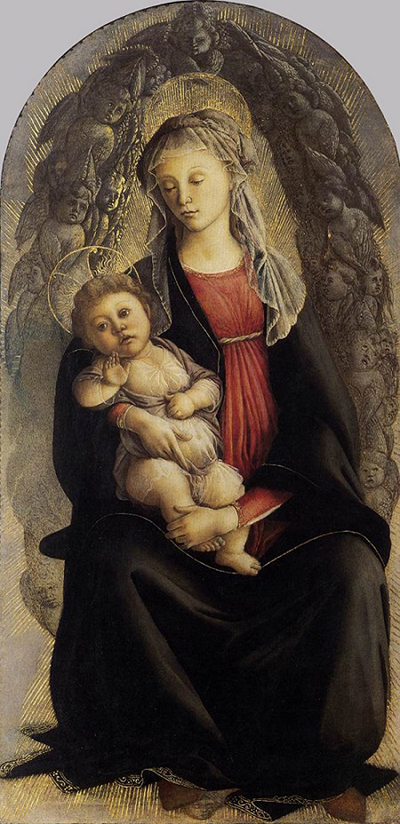Botticelli produces some beautiful detail to the background scene of this signficant artwork from around 1469-1470
The atmosphere of this Madonna and Child depiction is more of protection, mother grasping her child with an understanding of the difficulties he would face in later life. In this painting there are no angels as seen elsewhere in his work, the focus is purely concentrated on the two figures in a personal, touching tribute.
Madonna in Glory with Seraphim is one of two full figure portraits of Madonna by Botticelli to be found in the Uffizi, the other being Madonna of the Rose Garden. Whilst he addressed this theme frequently within his tempera on panel artworks, these two differed from the rest in several signficant ways.
This painting differs in that the Virgin baby looks directly at the viewer, where as in other paintings he is staring at his mother or accompanying angels. She again tooks thoughtful and calm, as with most of Botticelli's other depictions.
It is likely that this thoughfulness is from the understanding of what her son represents as well as the trauma that he will later experience in his life. In this sense, it is a touching depiction of mother and son with an underlying feeling of sadness at what is to come.
Botticelli would sometimes leave his background very simple but in this case there is considerable detail in the arch which sits above the Virgin's head.




